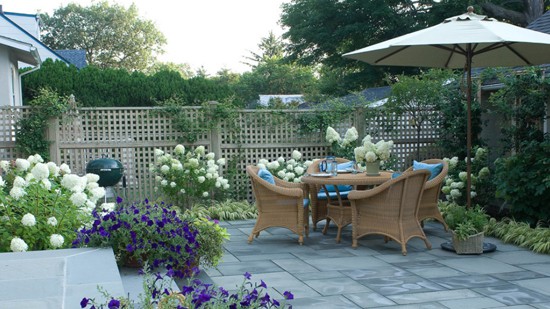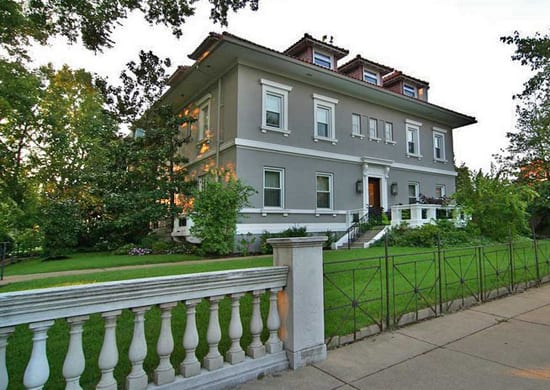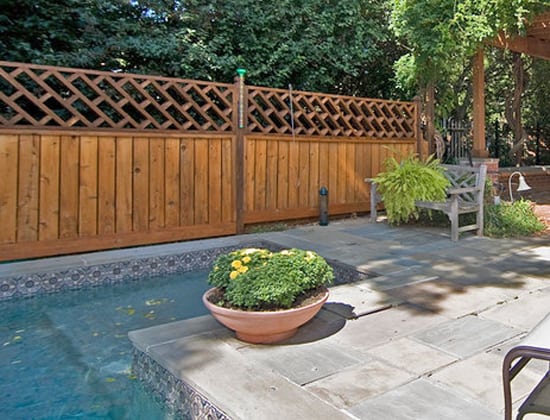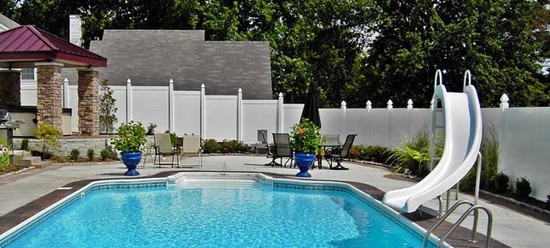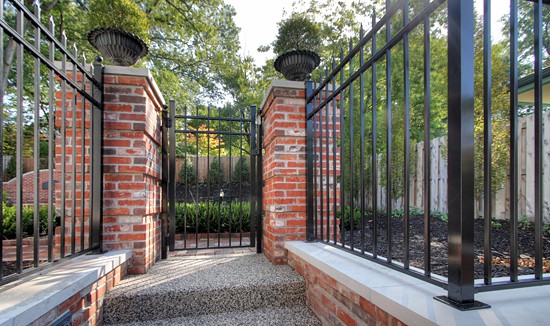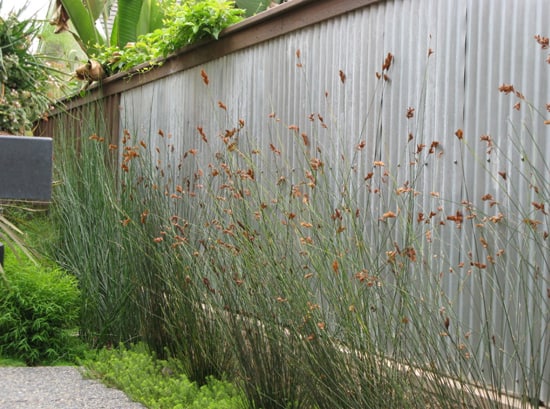Most every home has some kind of fencing on the grounds. When it comes to choosing a fence, there are many things to consider. Here’s a basic primer on how to choose the right fence for your home.
The Purpose of the Fence
If you need a secure fence to keep animals and children in, a wooden-split rail fence won’t do. If you need to gain some privacy, a chain-link fence is not your best choice. If you need only mark – or imply – a boundary, you have many artistic options before you. Knowing the purpose of your fence guides you to the height, construction and material that best accomplishes this.
The Style of Your Home
The architecture of your home makes it easy to eliminate what type of fence not to use. Imagine a chain link fence surrounding a Victorian gingerbread mansion to understand the concept of what is appropriate, and what is not. Older homes of classic architecture look best with brick or ornamental metal fences, while a contemporary ranch home blends harmoniously with a vinyl or wood privacy fence. There should be a design connection between your home and the fence that surrounds it.
The Material of the Fence
Let’s review the most popular fencing materials, and their pros and cons.
A Wood Fence is the classic American archetype, and they remain popular because they can be built in any style, size or height, from the iconic white picket fence to the 7-foot privacy fence. A wood fence can have the lowest purchase and installation cost, but will require continual maintenance (applying new stain or paint every 2 – 3 years) that must be budgeted for, both money- and time-wise. Wood is a green, sustainable material, and erecting and repairing them can be a DIY project. In the Mid West, cedar or redwood fences stand up better to rot and insects, and pressure-treated wood has a longer life-span than untreated woods.
A Chain Link Fence is practically maintenance-free, sturdy and long-lasting. It’s affordable to buy and relatively easy to install, which makes it the popular choice when having to cover a lot of ground. It is considered “green” because the material can be recycled. The downside to chain link is the utilitarian look, but there are ways around that, including vinyl-coated styles that come in basic colors, turning it into a lattice for plants to grow on or letting your imagination run wild with chain link fence decoration ideas.
Vinyl Fencing – also known as plastic fencing – rapidly became a favorite because it is truly maintenance-free other than keeping it clean, which can be done with a garden hose. It’s available in an endless array of styles and colors, and can mimic most any other common fencing material. Vinyl is expensive, so if you have a large expanse to cover, consider mixing it up with another material. And while it can be a DIY installation project, there are some tricky aspects best handled by experienced installers. One last consideration for vinyl is strength; because of its hollow construction it can break or crack under too much applied pressure, so if you have large, active dogs or rambunctious kids playing sports in the yard, you might want to consider something stronger until things calm down.
Composite Fencing is the other popular plastic fencing. It is also known as engineered wood, and can mimic the look of most any wood boards. Composite is as maintenance-free as vinyl but is far stronger than a hollow vinyl fence because of its interior wood post construction. This also makes it more expensive than vinyl fences, and its installation really is best handled by professionals.
Ornamental Metal Fencing lends a distinguished, traditional look to your grounds, and can be worked into as many styles, sizes and heights as wood. Wrought iron or cast iron can last for hundreds of years, with rust being the only possible maintenance issue (and that can be sanded off). It is also very strong, and can be painted any color you wish (though that creates a maintenance issue). Wrought or cast iron can be cost effective considering their low-maintenance and durability, but if you go with a custom design it must be installed by experienced professionals.
If you’d like the look of wrought iron without the cost or rust, there are aluminum (shown above) or powder-coated galvanized steel fences. They are currently available only in black or white, and understand that they work only as ornamentation, so look but don’t climb!
This is a quick overview of popular fencing materials, but you do have plenty of other options, including brick or stone. And a fence is a great way to employ some creativity, like this fence made of wood frames and panels of corrugated metal:
For help with selecting and installing fences in the Metro St. Louis area, work with the designers and builders at Mosby Building Arts. To get started, call the Mosby office at 314.909.1800 or contact them here.




